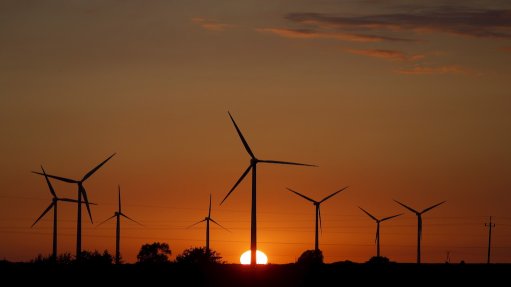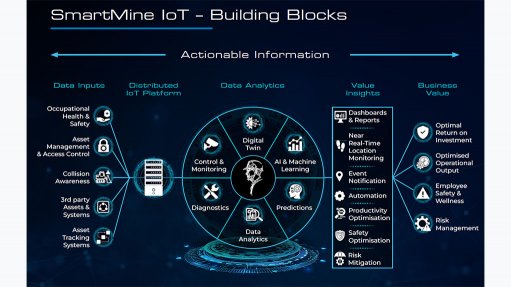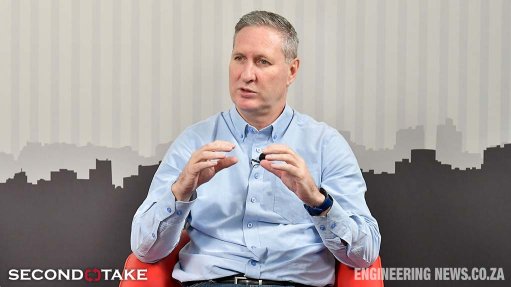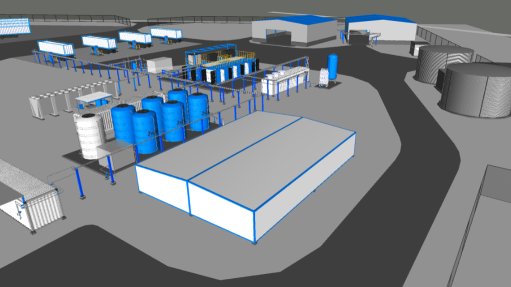On-The-Air (27/10/2017)
Every Friday morning, SAfm’s AMLive’s radio anchor Sakina Kamwendo speaks to Martin Creamer, publishing editor of Engineering News and Mining Weekly. Reported here is this Friday’s At the Coalface transcript:
Kamwendo: South Africa’s foremost mining leader – Mxolisi Mgojo – this week called for a collective national vision to re-energise the stagnating South African economy.
Creamer: We have got a very bad run in South African economy talking about 0,7% growth, but there is one energizer that can lift that and that is mining. The foremost leader, the president of the Chamber of Mines of South Africa Mxolisi Mgojo, is prepared to lead a collective national vision initiative, because without something collective we are not going to compete with a lot of the countries that even in these tough times are moving ahead.
We see a small country like New Zealand, because it has put its mind to it, actually growing faster then any other OECD country. They don’t have any of the mineral benefits that we have. If you look at the exportation of the minerals, even the bad year last year, it is nearly half a trillion rand worth of exports.
If you add the semi-beneficiated metals that is 40% of the exports of South Africa. You cannot do without that. Even 150 years after discovery of diamonds, 130 after discovery of gold, mining still shapes the South African economy. Therefore, mining needs to be involved in catalysing a collective vision and what Mgojo is insisting is that it has got to be even broader then when they had the previous two Mining Charters.
This Mining Charter Three is so narrow, that it just doesn't take anyone in, it is not going to take us anywhere. He wants the broadest possible approach, no more fragmentation in the looking of the economy. He believes then the momentum that this can create can start moving our economy forward and start creating jobs.
When you look at the potential just the money that is spent by mines on the social and labour plans, he is saying let’s put that into a bigger pot and stop doing things in a fragmented way. He is also saying that mining must not just be reporting to the Mineral Resources Ministry and the Department of Mineral Resources, but must report across several ministries, not just one ministry.
The Treasury has to be involved and civil society has to be involved in what we create as this big collective broad vision that can re-energise the South African economy. It has the ability to move this economy forward.
Kamwendo: Big Type II diamonds that have been buried deep in the earth of billions of years are popping up to the surface and fetching as much as $63-million apiece.
Creamer: You can imagaine, that is more then R700-million for one diamond. This is something that academia at the Eleventh Kimberlite Conference in Botswana. Academia and industry coming together and saying we have walked away from low-grade areas thinking that they have no potential, go back and look again.
Look at what has happened at AK6 in Botswana. De Beers walked away saying the grade is only one to two carats per 100 ton, this is not good enough for us. Later with new technology and some new thinking, along comes Lucara and takes that over and at Karowe we are getting diamonds the size of tennis balls, that really fetch enourmous amounts of money. It is not just one that they found, they have found several.
What the academia are now saying is that we must relook, nearly 3-billion years ago in areas lower then 660 km below us there has been the formation of these big diamonds. They have popped to the top through the kimberlite elevation and people have walked away after looking at the low-grades. They say this must not be something that we walk away from, don’t be fooled by this.
The academics are saying go back and study, because you may have enormous value there as has been proved at Karowe in Botswan and also been proved at Letseng in Lesotho where De Beers also walked away saying the number of carats per 100 ton is far to low. The belief was that 40 to 50 carats per 100 ton is necessary before it is taken seriously, but that has been a mistake, and their advice is ‘go back and look once more’.
Kamwendo: Proposed expansions to the Gautrain rapid rail network reach out to areas including Jabulani in Soweto and Mamelodi in Tshwane.
Creamer: We should be smiling about this and we see the plan. We see the good intentions are there, but where is the money. We know that South Africa needs money to do this sort of thing with the Gautrain. We know that 2027 the existing concession will end and by that stage we need a new plan.
We know that it takes 12 years. We took 12 years to put this Gautrain infrastructure in as we see it today. So, you must start planning now for what is going to happen in 10-years time and they are doing that. Of course, they are very conscious that money is a thing and if they go along to Treasury now, Treasury will look at them with beady and say we have got none. They know that even in downturns, you have got to start planning and they are saying that you can do this in phases.
They are talking about the first phase and five phases in all is really a doubling up of the Gautrain network. We see it getting to Jabulani in Soweto and Mamelodi in Tshwane. This is the potential and we know that population is building up. We can see the mobility on the freeways is not happening and this is absolutely essential that the government of Gauteng looks at new mobility for its people.
The one way of doing it that has been very successful has been the Gautrain. But even as we stand here, the Gautrain needs subsidies. It can cover its operation, but it doesn’t cover it capital and maintenance costs. You can see that Gauteng is having to contribute R850-million a year. That concession ends in 2027 and perhaps that subsidy can then go into this new area which will have instead of the ten stations we have got now, they are talking about 19 stations. So it is a virtual double up.
Kamwendo: Any idea how much this will cost?
Creamer: They won’t let us know, they are not putting up the numbers at this stage. I think they don’t want to frighten everybody.
Kamwendo: Thanks very much. Martin Creamer is publishing editor of Engineering News and Mining Weekly.
Comments
Press Office
Announcements
What's On
Subscribe to improve your user experience...
Option 1 (equivalent of R125 a month):
Receive a weekly copy of Creamer Media's Engineering News & Mining Weekly magazine
(print copy for those in South Africa and e-magazine for those outside of South Africa)
Receive daily email newsletters
Access to full search results
Access archive of magazine back copies
Access to Projects in Progress
Access to ONE Research Report of your choice in PDF format
Option 2 (equivalent of R375 a month):
All benefits from Option 1
PLUS
Access to Creamer Media's Research Channel Africa for ALL Research Reports, in PDF format, on various industrial and mining sectors
including Electricity; Water; Energy Transition; Hydrogen; Roads, Rail and Ports; Coal; Gold; Platinum; Battery Metals; etc.
Already a subscriber?
Forgotten your password?
Receive weekly copy of Creamer Media's Engineering News & Mining Weekly magazine (print copy for those in South Africa and e-magazine for those outside of South Africa)
➕
Recieve daily email newsletters
➕
Access to full search results
➕
Access archive of magazine back copies
➕
Access to Projects in Progress
➕
Access to ONE Research Report of your choice in PDF format
RESEARCH CHANNEL AFRICA
R4500 (equivalent of R375 a month)
SUBSCRIBEAll benefits from Option 1
➕
Access to Creamer Media's Research Channel Africa for ALL Research Reports on various industrial and mining sectors, in PDF format, including on:
Electricity
➕
Water
➕
Energy Transition
➕
Hydrogen
➕
Roads, Rail and Ports
➕
Coal
➕
Gold
➕
Platinum
➕
Battery Metals
➕
etc.
Receive all benefits from Option 1 or Option 2 delivered to numerous people at your company
➕
Multiple User names and Passwords for simultaneous log-ins
➕
Intranet integration access to all in your organisation



















